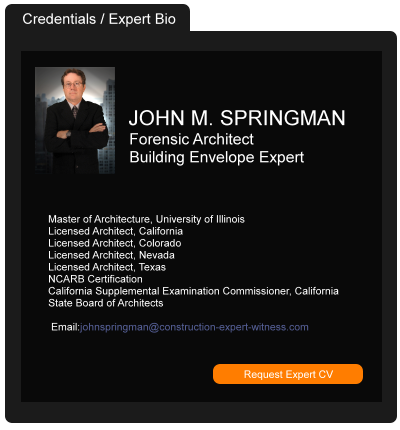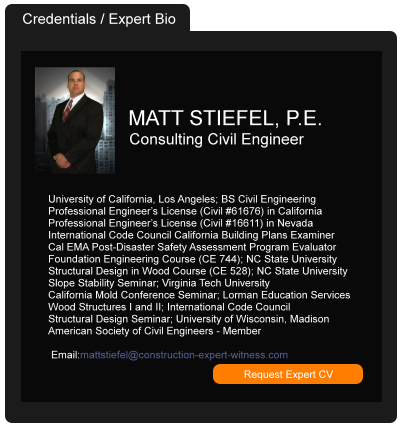Filing Motion to Increase Lien Transfer Bond (Before Trial Court Loses Jurisdiction Over Final Judgment)
May 15, 2023 —
David Adelstein - Florida Construction Legal UpdatesIf a construction lien is recorded against real property, the lien can be transferred to a lien transfer bond. This transfers the security or collateral of the construction lien from the real property to the lien transfer bond. The lien transfer bond can be a bond posted by a surety company or it can be cash. This is governed by Florida Statute s. 713.24. The amount of the lien does not dictate the amount of the lien transfer bond. Rather, the lien transfer bond needs to be in the amount of the lien, plus interest on that amount for three years, plus $1,000 or 25% of the amount of the lien (whichever is greater so factor in the 25%) to cover attorney’s fees. Fla. Stat. 713.24(1).
If you are looking to transfer a construction lien to a lien transfer bond, make sure to consult with counsel.
Keep in mind there is a statutory mechanism for a lienor to increase the lien transfer bond to cover attorney’s fees and costs and notice the word “must” in the statute below. Pursuant to Florida Statute s. 713.24(3):
Any party having an interest in such security or the property from which the lien was transferred may at any time, and any number of times, file a complaint in chancery in the circuit court of the county where such security is deposited, or file a motion in a pending action to enforce a lien, for an order to require additional security, reduction of security, change or substitution of sureties, payment of discharge thereof, or any other matter affecting said security. If the court finds that the amount of the deposit or bond in excess of the amount claimed in the claim of lien is insufficient to pay the lienor’s attorney’s fees and court costs incurred in the action to enforce the lien, the court must increase the amount of the cash deposit or lien transfer bond. Nothing in this section shall be construed to vest exclusive jurisdiction in the circuit courts over transfer bond claims for nonpayment of an amount within the monetary jurisdiction of the county courts.
Read the court decisionRead the full story...Reprinted courtesy of
David Adelstein, Kirwin Norris, P.A.Mr. Adelstein may be contacted at
dma@kirwinnorris.com
Texas Supreme Court Finds Payment of Appraisal Award Does Not Absolve Insurer of Statutory Liability
April 19, 2021 —
Allison Griswold & Sarah Smith - Lewis BrisboisThe Texas Supreme Court recently published its long-awaited decision in the Hinojos v. State Farm Lloyds. In it, the court affirmed its holding in Barbara Technologies, finding that payment of an appraisal award does not absolve an insurer of statutory liability when the insurer accepts a claim but pays only part of the amount it owes within the statutory deadline, and a policy holder can proceed with an action under the Texas Prompt Payment of Claims Act.
In 2013, Louis Hinojos made a claim for storm damage to his home. State Farm’s initial inspection resulted in an estimate below the deductible, but Hinojos disagreed and requested a second inspection. At the second inspection, the adjuster identified additional damage resulting in a payment to Hinojos of $1,995.11. Hinojos then sued State Farm – and State Farm invoked appraisal approximately 15 months after suit was filed. The appraisal resulted in State Farm tendering an additional payment of $22,974.75. State Farm moved for summary judgment, arguing that timely payment of an appraisal award precluded prompt payment (or Chapter 542) damages. The trial court granted summary judgment and Hinojos appealed (notably Barbara Technologies had not yet been decided). The Court of Appeals affirmed State Farm’s victory on the basis that “State Farm made a reasonable payment on Hinojos’s claim within the sixty-day statutory limit….” Hinojos petitioned the Texas Supreme Court for review.
Reprinted courtesy of
Allison Griswold, Lewis Brisbois and
Sarah Smith, Lewis Brisbois
Ms. Griswold may be contacted at Allison.Griswold@lewisbrisbois.com
Ms. Smith may be contacted at Sarah.Smith@lewisbrisbois.com
Read the court decisionRead the full story...Reprinted courtesy of
Toll Brothers Climbs After Builder Reports Higher Sales
February 26, 2015 —
John Gittelsohn – Bloomberg(Bloomberg) -- Toll Brothers Inc., the largest U.S. luxury-home builder, rose the most in a year after the company reported a higher-than-expected quarterly profit and said it sold more properties at higher prices.
Net income for the three months through January was $81.3 million, or 44 cents a share, compared with $45.6 million, or 25 cents, a year earlier, the Horsham, Pennsylvania-based builder said in a statement Tuesday. The average of 14 estimates was for 28 cents a share, according to data compiled by Bloomberg.
Read the court decisionRead the full story...Reprinted courtesy of
John Gittelsohn, BloombergMr. Gittelsohn may be contacted at
johngitt@bloomberg.net
What is Toxic Mold Litigation?
May 30, 2018 —
Vik Nagpal – Bremer Whyte BlogTo understand what Toxic Mold Litigation is, it is important to first identify and understand what toxic mold is. Mold is a fungus which is essentially everywhere, and certain types of mold, known as toxic mold, may cause severe personal injuries and/or property damage. Toxic mold refers to those molds capable of producing mycotoxins which are organic compounds capable of initiating a toxic response in vertebrates. Toxic mold generally occurs because of water intrusion, from sources such as plumbing problems, floods, or roof leaks.
It is this ageless life form that has spawned a new species of toxic tort claims and has had legal and medical experts debating the complex health implications that follow. Here is some information as to what toxic mold litigation is and when you should hire a lawyer for toxic mold.
Read the court decisionRead the full story...Reprinted courtesy of
Vik Nagpal, Bremer Whyte Brown & O'Meara LLPMr. Nagpal may be contacted at
vnagpal@bremerwhyte.com
NTSB Faults Maintenance, Inspection Oversight for Fern Hollow Bridge Collapse
March 19, 2024 —
Jim Parsons - Engineering News-RecordThe City of Pittsburgh’s failure to act for more than a decade on repeated maintenance and repair recommendations regarding the Fern Hollow Bridge was the probable cause for the structure’s dramatic 2022 collapse, the National Transportation Safety Board (NTSB) said at its Feb. 21, 2024, meeting. The city is the owner of the bridge.
Reprinted courtesy of
Jim Parsons, Engineering News-Record
ENR may be contacted at enr@enr.com
Read the full story... Read the court decisionRead the full story...Reprinted courtesy of
A Court-Side Seat: Clean Air, Clean Water, Citizen Suits and the Summer of 2022
November 01, 2022 —
Anthony B. Cavender - Gravel2GavelThis is a selection of significant environmental and regulatory law cases decided by the federal courts after the Supreme Court’s 2021 Term concluded.
The U.S. Court of Appeals for the DC Circuit
National Association of Broadcasters v. Federal Communications Commission
On July 12, 2022, the DC Circuit held that an order of the FCC requiring radio broadcasters to follow a prescribed five-step process to verify the identity of program sponsors was not authorized by the Communications Act. According to the court, the FCC “decreed a duty that the statute does not require, and that the statute does not empower the FCC to impose.” Here, the agency failed to identify the statutory authority it needed to authorize the issuance of such an order. While certainly not as significant as the Supreme Court’s ruling in West Virginia v. EPA, decided only a few days before this decision was released, it is a strong reminder that the courts want to know if a challenged rule is authorized by law.
Humane Society of the U.S., et al., v. U.S. Department of Agriculture
On July 22, 2022, the court decided a case involving the steps the Administrative Procedure Act and the Federal Register Act require to be taken before a final agency rule is legally promulgated. Customarily, when there has been a change in Presidential administrations, the incoming administration “quietly” withdraws rules awaiting Federal Register publication without much ceremony. The majority of this panel agreed that public notice should have been provided to the regulated community to comment on the new administration’s action to pull back a new rule which had been made available for public inspection before Federal Register publication that would have strengthened the protections afforded “show horses,” as now required by law. The court noted that “it seems clear that filing with the Federal Register constituted promulgation of a regulation even though publication may not occur until a later date.” Circuit Judge Rao filed a strong dissent. “By cutting off agency discretion at public inspection, the majority imposes judicial burden on agency procedures that conflicts with circuit precedent, the statutory framework and a longstanding regulation permitting withdrawals prior to publication.” There could be a further review of this unique ruling.
Read the court decisionRead the full story...Reprinted courtesy of
Anthony B. Cavender, PillsburyMr. Cavender may be contacted at
anthony.cavender@pillsburylaw.com
Ohio subcontractor work exception to the “your work” exclusion
August 11, 2011 —
CDCoverage.comIn Mosser Construction, Inc. v. Travelers Indem. Co., No. 09-4449 (6th Cir. July 14, 2011)(unpublished), claimant project owner Port Clinton contracted with insured general contractor Mosser for the construction of a building. Following completion, Port Clinton sued Mosser for breach of contract seeking damages because of physical injury to the project occurring after completion resulting from defective backfill material that settled improperly.��
Mosser’s CGL insurer Travelers denied a defense and Mosser filed suit against Travelers seeking a declaratory judgment. Mosser and Travelers filed cross-motions for summary judgment on the issue of whether the supplier of the backfill material?Gerken?qualified as a subcontractor for purposes of the subcontractor work exception to the “your work” exclusion—exclusion l.—for property damage to or arising out of Mosser’s completed work.  Mosser had purchased the backfill material from Gerken pursuant to a purchase order specifying that Gerken was to supply Mosser with an industry standard grade of backfill for use in the Port Clinton project.
Read the full story…
��Reprinted courtesy of CDCoverage.com
Read the court decisionRead the full story...Reprinted courtesy of
Law Firm Fails to Survive Insurer's and Agent's Motions to Dismiss
May 08, 2023 —
Tred R. Eyerly - Insurance Law HawaiiInterpreting New Jersey law, the federal district court dismissed without prejudice the law firm's complaint against its insurer and agent. Law Office of Drew J. Bauman v. Hanover Ins. Co., 2023 U.S. Dist. LEXIS 31844 (D. N. J. Feb. 27, 2023).
The law firm had a professional liability policy issued by Hanover. The law firm was sued in the underlying case involving a real estate transaction. The law firm tendered the defense and indemnity of the underlying complaint, but coverage was denied. The law firm sued, contending Hanover breached the policy by refusing to abide by its obligations under the policy.
In the alternative, the law firm alleged that its agent, USI Insurance Services, LLC, was liable if the policy did not require Hanover to defend and indemnify in the underlying case. It was further alleged that USI was responsible for procuring coverage for the law firm and knew of its insurance needs. USI was negligent in securing a policy with inadequate coverage.
Read the court decisionRead the full story...Reprinted courtesy of
Tred R. Eyerly, Damon Key Leong Kupchak HastertMr. Eyerly may be contacted at
te@hawaiilawyer.com


































































